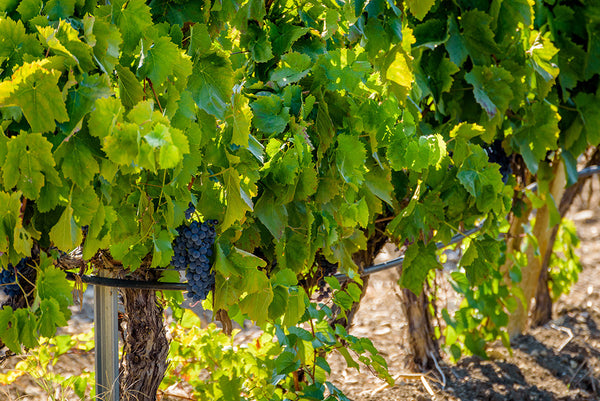Nero d'Avola
Sicilian locals would consider Nero d'Avola the most important red grape variety grown in Sicily — but it might more accurately be described as Sicily’s best-kept secret. Nero d'Avola remains relatively unknown across the world. That’s a shame because this ancient red grape, which Greeks first brought to Sicily before the common era, produces gorgeous, full-bodied, dry red wines with complex flavor profiles.

Best of all, the best Nero d'Avola wines do not have to be expensive. Anyone interested in learning more about the best Sicilian wines can enjoy a good Nero d'Avola. Here’s what you need to know before you do.
Nero d'Avola: A brief history
Nero d'Avola is the most widely planted and economically important red grape variety grown in Sicily today. Its name translates to “black of Avola,” a reference to the fact that it is especially widespread in the Sicilian borough of Avola as well as to the grape’s unusually dark color.
While the precise origins of Nero d'Avola are open to debate, the grape has a long history — the most common theory suggests that the Greeks imported it when they established colonies in Sicily in the 8th century BC.
Nero d'Avola is an ancient vine that was primarily used to produce blends in the 20th century. Modern times bring us exciting varietal wines more and more often, however, with delightful results.
Besides Sicily, Nero d'Avola is also grown in some other parts of Italy, in the United States, and in Australia — this grape variety thrives in warm, dry climates.
What do Nero d'Avola wines taste like?
The Nero d'Avola grapes come from limestone-clayey vineyards (trubi) at an average altitude of 330 metres above sea level but there are also excellent example of this wine made from vineyards located at higher altitudes from central areas of Sicily.

Often likened to Cabernet Sauvignon due to its full-bodied style and flavors. The taste of varietals made with Nero d'Avola grapes can be described as a rich mixture of black plum, black cherry, chocolate, licorice, and chili pepper. Wines made with Nero d'Avola are usually medium/full-body and tannins, with medium acidity and great persistance. Young Nero d'Avola wines allow fruity flavors to shine, while aged varieties are rich and complex.
Nero d'Avola wines typically have an alcohol content of 13.5 to 14.5 percent, making them excellent dinner wines. You may like to enjoy Nero d'Avola wines with full-flavoured dishes, chargrilled meats and well-matured cheeses.
Nero d'Avola should be served at room temperature, meaning 60 to 68 ºF (16 to 20 ºC).
Which wines contain Nero d'Avola grapes?
Nero d'Avola grapes may be found in Eloro and Riesi wines, where the grape makes up at least 80 percent of the wine. Menfi and Sciacca wines contain at least 70 percent Nero d'Avola, while Cerasuolo di Vittoria DOCG may have a Nero d'Avola content of up to 60 percent.
This exciting red grape variety can also appear in a whole host of other DOC wines. These include Monreale, Sambuca di Sicilia, Santa Margherita di Belice, Contea di Sclafani, and Delia Nivolelli. Small amounts of Nero d'Avola are sometimes found in Marsala, Faro, and Contessa Entellina wines.
The grape’s unique taste comes out in all of these wines, but connoisseurs may want to pay special attention to the Nero d'Avola varietal wines produced around Avola.
Nero d'Avola FAQ
What is Nero d’Avola wine?
Nero D’avola is a red wine made by the most popular Sicilian red grape.
Is a Nero d’Avola similar to a pinot noir?
Nero d’Avola is not the same as pinot noir. Nero d’Avola produces a much stronger tasting wine. Nero d’Avola can be more closely compared with Cabernet Sauvignon.
What does Nero d Avola mean in Italian?
In Italian Nero d’Avola means black of Avola. This translation describes the colour of the grape (black) as well as the area where it was originally cultivated (Avola). Nowadays, Nero d’Avola can be found all over the island of Sicily.
Is Nero d’Avola a Shiraz?
Nero d’Avola is not a shiraz. Syrah is similar to Shiraz but Nero d’Avola can be more closely compared to Cabernet Sauvignon.

